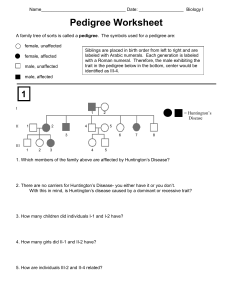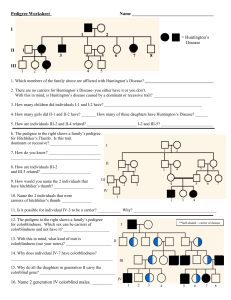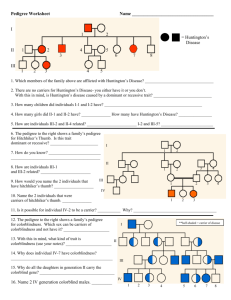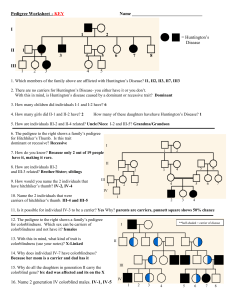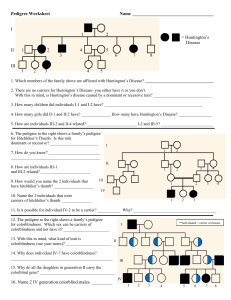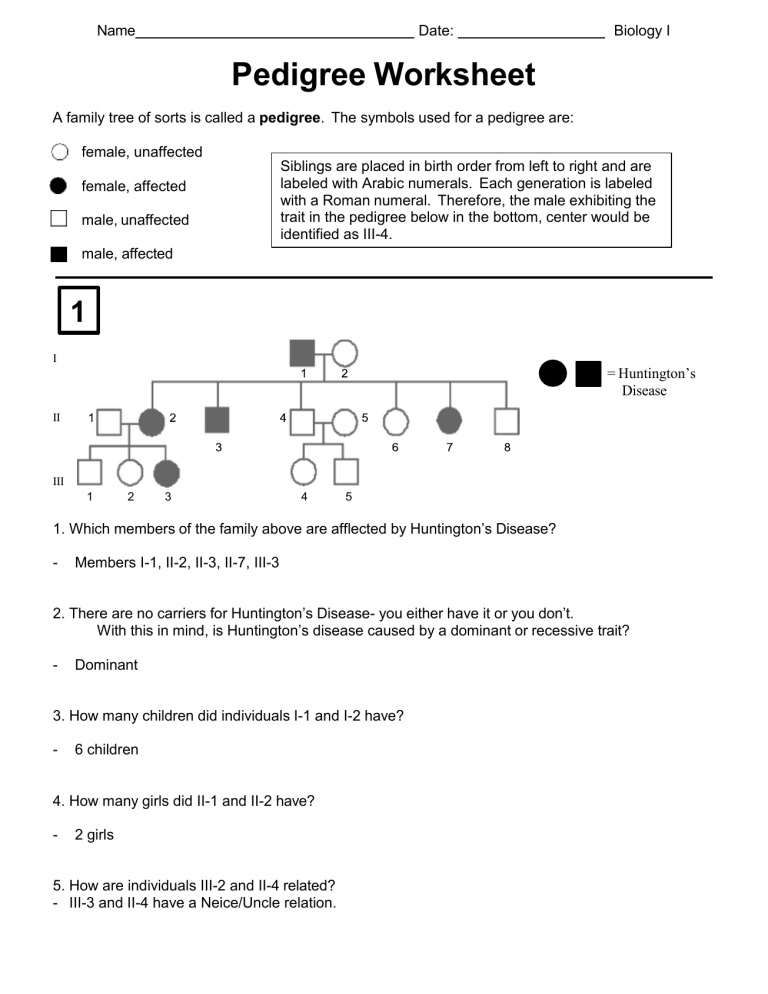
Name Date: Biology I Pedigree Worksheet A family tree of sorts is called a pedigree. The symbols used for a pedigree are: female, unaffected female, affected male, unaffected Siblings are placed in birth order from left to right and are labeled with Arabic numerals. Each generation is labeled with a Roman numeral. Therefore, the male exhibiting the trait in the pedigree below in the bottom, center would be identified as III-4. male, affected 1 I = Huntington’s Disease II III 1 2 3 4 5 1. Which members of the family above are afflected by Huntington’s Disease? - Members I-1, II-2, II-3, II-7, III-3 2. There are no carriers for Huntington’s Disease- you either have it or you don’t. With this in mind, is Huntington’s disease caused by a dominant or recessive trait? - Dominant 3. How many children did individuals I-1 and I-2 have? - 6 children 4. How many girls did II-1 and II-2 have? - 2 girls 5. How are individuals III-2 and II-4 related? - III-3 and II-4 have a Neice/Uncle relation. 2 I II III IV 12. The pedigree above shows the passing on of colorblindness. What sex is MOST likely to be carriers of colorblindness? - Female 13. Why does individual IV-7 (a female) have colorblindness? - Her father is colorblind, and the mom is a carrier to the gene. 14. Why do all the daughters in generation II carry the colorblind gene? - Colorblindness is in the x chromosome, so females need two copies of this gene to get affected. In this case they only have one, so they are carriers. 15. List 2 IV generation colorblind males. - IV- 1 and IV- 5 3 16. Is this trait dominant or recessive? Explain your answer. - Recessive because its not shown in every generation, only in the first (I-1) and third generation (III- 3, III- 4). 17. What gave you the essential information to decide that II-3 and II-4 were heterozygous? - Recessive traits can skip generations because heterozygotes display the phenotype associated with the dominant allele. The trait shaded black is associated with a recessive allele. II-3 and II-4 are heterozygous because they have a son and a daughter that are affected. If II-3 was homozygous dominant for the normal allele, then all of her children would have normal vision.
